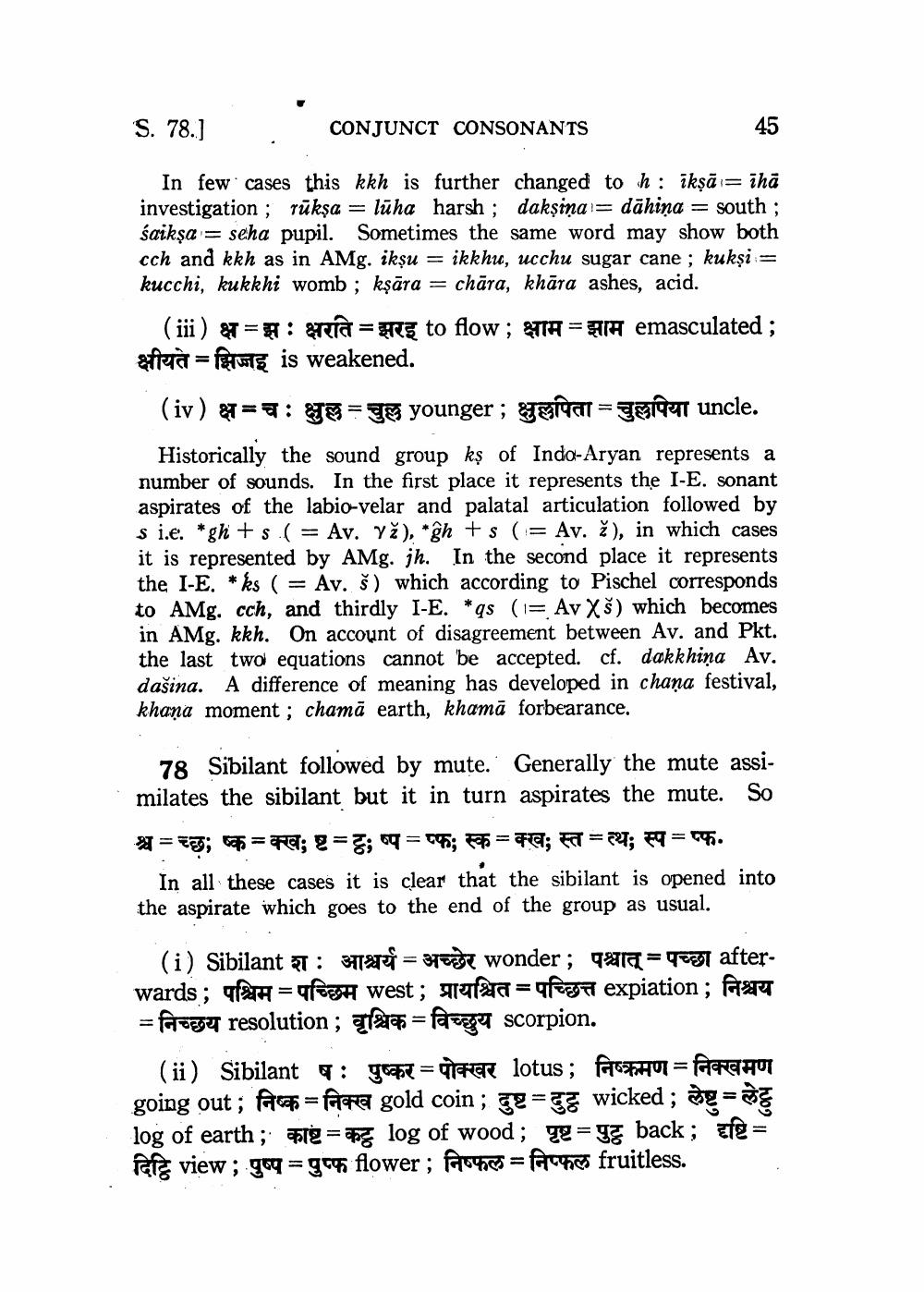________________
S. 78.)
CONJUNCT CONSONANTS
45
In few cases this kkh is further changed to h: ikşā= ihā investigation; tūkņa = lūha harsh; daksina= dāhina = south ; śaikşa = seha pupil. Sometimes the same word may show both cch and kkh as in AMg. ikṣu = ikkhu, ucchu sugar cane; kukși = kucchi, kukkhi womb; kşāra = chāra, khāra ashes, acid.
(iii) 8= : a = us to flow ; 9TH = Eh emasculated ; fra Fruite is weakened. (iv) =T: TH=ye younger ; JEITA = Esger uncle.
Historically the sound group kş of Indo-Aryan represents a number of sounds. In the first place it represents the I-E. sonant aspirates of the labio-velar and palatal articulation followed by s i.e. *gh + s ( = Av. Yž), *ghts (= Av. ž), in which cases it is represented by AMg. jh. In the second place it represents the I-E. * ks ( = Av. š) which according to Pischel corresponds to AMg. cch, and thirdly I-E. *qs (i= Av Xš) which becomes in AMg. kkh. On account of disagreement between Av. and Pkt. the last two equations cannot be accepted. cf. dakkhina Av. dašina. A difference of meaning has developed in chana festival, khana moment; chamā earth, khamā forbearance.
78 Sibilant followed by mute. Generally the mute assimilates the sibilant but it in turn aspirates the mute. So * = z; 5 = Re; 2 =; q = 0%; ** = Fe; F = 221; F9 = 44.
In all these cases it is clear that the sibilant is opened into the aspirate which goes to the end of the group as usual.
(i) Sibilant श : आश्चर्य = अच्छेर wonder; पश्चात् = पच्छा afterwards; H =qfesh west; afa=qfegat expiation ; fazer = Faroegy resolution ; 1919 = faregger scorpion.
(ii) Sibilant q: geoape iter lotus ; fanu = Farrah going out ; निष्क = निक्ख gold coin ; दुष्ट = दुट्ठ wicked ; लेष्टु = लेटु log of earth; काष्ट = कट्ठ log of wood ; पृष्ट = पुट्ठ back ; दृष्टि = faig view ; gog=gon flower ; 045 = facenes fruitless.




